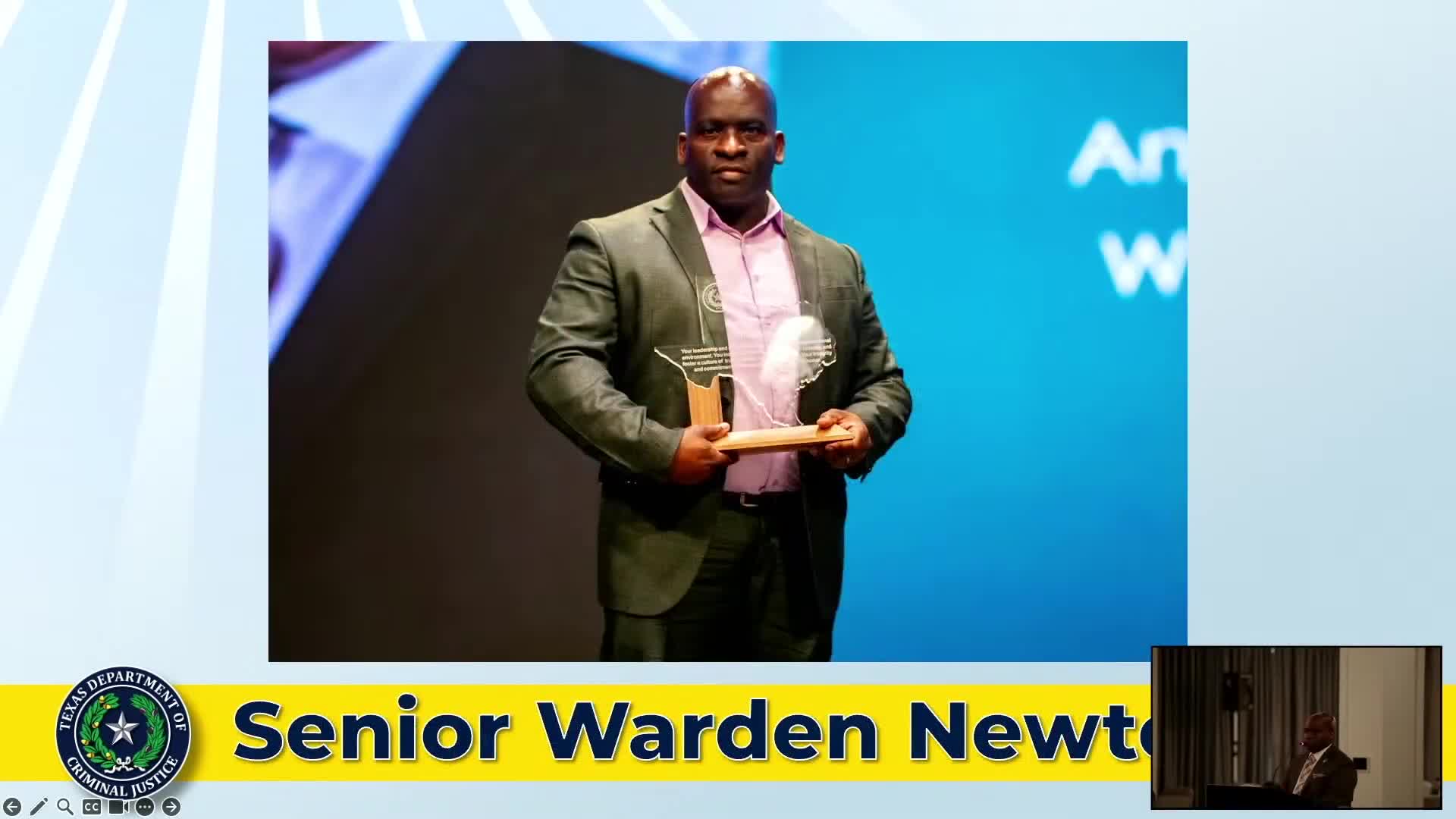Estelle unit pilot shifts to team‑based staffing; wardens report higher retention and lower no‑show rates
October 17, 2025 | Department of Criminal Justice (TDCJ), Departments and Agencies, Executive, Texas
This article was created by AI summarizing key points discussed. AI makes mistakes, so for full details and context, please refer to the video of the full meeting. Please report any errors so we can fix them. Report an error »

The Texas Department of Criminal Justice’s Estelle Unit in Huntsville has piloted a team‑based staffing model designed to replace static posts with focused teams, senior warden Anthony Newton told the board on Oct. 17. Newton and agency leadership described early operational benefits and said the model is being expanded to other facilities.
Newton said Estelle’s pilot created five teams — a security‑chair team, ingress/egress team, security‑check team, inmate‑management team and sales/search team — each with three to five officers who work together consistently and are led by designated team leaders. The teams “conduct different functions of going through the hallways, basically implementing a community policing type of atmosphere,” Newton said, adding that the structure allows officers to “enter cell blocks together” and increases officer safety and accountability.
Metrics and board discussion: Newton described staffing and attendance metrics in his presentation. He said, “The pilot began in March 2025 when the Estelle unit was at that time 63% staffed. As of today, we are now at 92% staffed, and our call in no show rates have been reduced by nearly 30%.” In a video excerpt Newton also said the facility was “close to 90% staffed” and that call‑in/no‑show rates had fallen “25%,” a variation that Newton and board members discussed during Q&A. Board members asked about team turnover and whether officers rotate between teams; Newton said teams can support each other and staff rotate as operational needs dictate.
Why it matters: The unit’s team leaders reduce administrative burden on sergeants and lieutenants and are intended to improve morale, shared ownership, training and retention. Newton told the board the approach reduced administrative workload for supervisors so they can “dedicate more time to critical operational oversight.” Newton also described a leadership course the team leaders will receive from the Training and Leader Development Division focused on leadership, communication, team building and decision making.
Agency rollout and oversight: Executive Director Bobby Lumpkin told the board the approach is being observed and measured by the Office of Strategic Initiatives and Modernization (OSIM). Lumpkin said seven additional facilities began piloting the model on Oct. 1 and that agency leaders, including senior wardens from several units, visited Estelle to review operations before launching pilots at those facilities.
Questions and next steps: Board members asked about 12‑hour shift coverage, internal team conflicts and how teams handle incentivized housing that simulates dorm‑style movement. Newton said teams operate on 12‑hour shifts and that teams have flexibility to cover other wings when needed. Lumpkin and Newton said OSIM will monitor grievances, disciplinary actions, injuries, assaults and other operational indicators to evaluate the pilot.
Ending: Board members praised Estelle’s leadership and encouraged further evaluation. Newton thanked staff for the pilot’s success and said the model depends on consistent team leadership, training and coordination with agency strategic offices.
Newton said Estelle’s pilot created five teams — a security‑chair team, ingress/egress team, security‑check team, inmate‑management team and sales/search team — each with three to five officers who work together consistently and are led by designated team leaders. The teams “conduct different functions of going through the hallways, basically implementing a community policing type of atmosphere,” Newton said, adding that the structure allows officers to “enter cell blocks together” and increases officer safety and accountability.
Metrics and board discussion: Newton described staffing and attendance metrics in his presentation. He said, “The pilot began in March 2025 when the Estelle unit was at that time 63% staffed. As of today, we are now at 92% staffed, and our call in no show rates have been reduced by nearly 30%.” In a video excerpt Newton also said the facility was “close to 90% staffed” and that call‑in/no‑show rates had fallen “25%,” a variation that Newton and board members discussed during Q&A. Board members asked about team turnover and whether officers rotate between teams; Newton said teams can support each other and staff rotate as operational needs dictate.
Why it matters: The unit’s team leaders reduce administrative burden on sergeants and lieutenants and are intended to improve morale, shared ownership, training and retention. Newton told the board the approach reduced administrative workload for supervisors so they can “dedicate more time to critical operational oversight.” Newton also described a leadership course the team leaders will receive from the Training and Leader Development Division focused on leadership, communication, team building and decision making.
Agency rollout and oversight: Executive Director Bobby Lumpkin told the board the approach is being observed and measured by the Office of Strategic Initiatives and Modernization (OSIM). Lumpkin said seven additional facilities began piloting the model on Oct. 1 and that agency leaders, including senior wardens from several units, visited Estelle to review operations before launching pilots at those facilities.
Questions and next steps: Board members asked about 12‑hour shift coverage, internal team conflicts and how teams handle incentivized housing that simulates dorm‑style movement. Newton said teams operate on 12‑hour shifts and that teams have flexibility to cover other wings when needed. Lumpkin and Newton said OSIM will monitor grievances, disciplinary actions, injuries, assaults and other operational indicators to evaluate the pilot.
Ending: Board members praised Estelle’s leadership and encouraged further evaluation. Newton thanked staff for the pilot’s success and said the model depends on consistent team leadership, training and coordination with agency strategic offices.
View full meeting
This article is based on a recent meeting—watch the full video and explore the complete transcript for deeper insights into the discussion.
View full meeting
